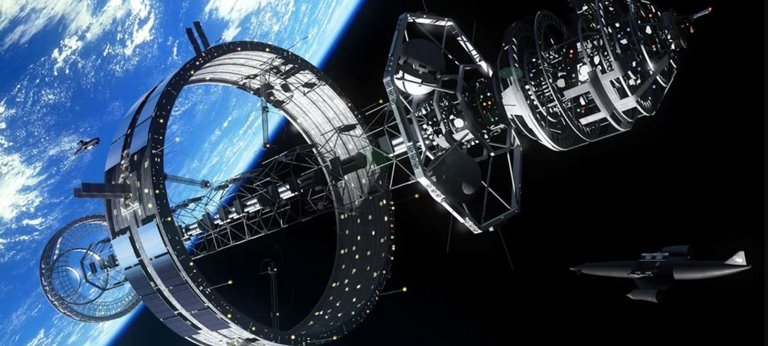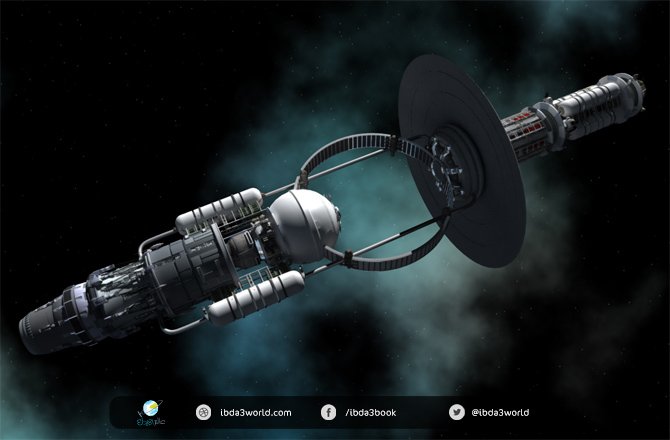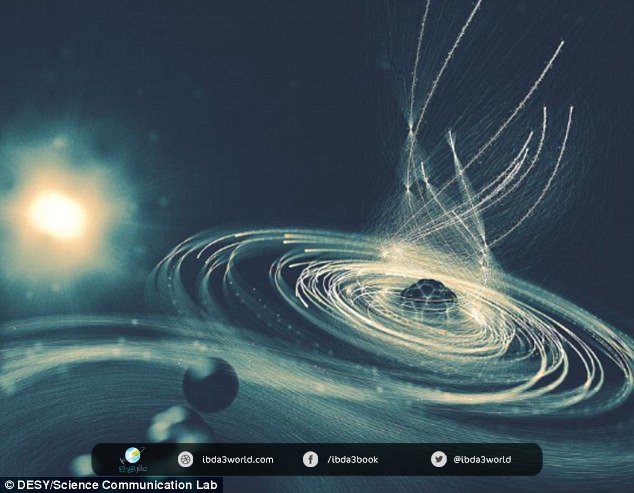
What happens if humans can make a black hole? The idea may seem frightening to the bad reputation of those terrifying entities in the universe, but this may also mean putting our hands finally on the ultimate and greatest source of energy and integrating it into an unprecedented space engine ... Black Hole-Drive!
<
In theory, artificially generated black holes can provide us with the energy to travel between solar systems and even galaxies. According to recent research, a black hole has been incorporated into a spacecraft engine that will provide the ability to travel to the Alpha Centauri system in an unprecedented short time. This is what Louis Crane and Shawn Westmoreland, two researchers and a professor at the University of Kansas, say specifically, will require a great deal of engineering planning and preparation.

The idea of this unconventional engine is concentrated in the use of a laser beam to create a micro black hole that is used as an energy source. The black hole produced here is actually the simplest kind of black hole at all ... The so-called Schwarzschild hole is a black hole that has a block but no electronic charging, making it emit Hawking Radiation. The smaller the black hole, the more energy it produces.
As you can imagine, creating such a black hole would not be easy anyway in spite of its incredible smallness; we would need a huge amount of energy to generate one in the first place. Crane and Westmoreland suggest that 370 square kilometers of solar cells be used to assemble enough energy each year to operate a gamma laser beam with a mass of 9/10 tonnes, enough to generate a single black hole. Later, after generating a few black holes, we can use them as an energy source to generate more ones.
<
According to the research, which deals with the possibilities of making the engine of the black hole, we use a black hole in space travel between the stars must have five important conditions are:
Have a life cycle long enough to take advantage of his card.
To be strong enough to accelerate itself to a fraction of the reasonable speed of light in a short time.
To be small enough so that we can generate one.
To be large enough so that we can concentrate the energy needed to generate it.
That its mass corresponds to the mass of the spacecraft it will carry.
Fortunately, microscopic black holes are ideal for their size, energy and age. In order to make a trip to the Centaur man system, we will need a black hole of 0.9 μm in diameter, but do not be fooled by its finite size. Its mass with this tiny size will reach 666,000 tons and produce 160 watts of power (the beta is equal to 10 feet in 15 watts)! This enormous amount of energy will give us the ability to reach the Centaur man in only 3.5 years, a period of time more than wonderful as we are 4.4 light years away from this astral system, which is the closest to us in the universe; that is the black hole engine will start with our vehicles speed is close to speed the light. For longer trips, we can use larger but weaker black holes, with only the smallest and smallest black holes for shorter trips.
![40FDCB2400000578-0-image-a-18_1496312889063.jpg]
But as expected, there are potential problems with Crane and Westmoreland's Black Hole Engine. According to Govind Menon, a professor of physics at the University of Troy, most views on the exploitation of black holes as an energy source are related to rotary holes, not as static as Schwarzschild's, where it becomes much more difficult because it produces only Hawking radiation, unlike the rotating holes that release gamma rays.
( )
)
Also, there is the problem of what we will have to do with the black hole when the life cycle ends; then it explodes! Fortunately, such an explosion could be catastrophic only on Earth and not in space, where we would have to drop the black hole at 1 AU of 149,597,870,691 km from anything important in the surrounding space and let it explode.

Both Crane and Westmoreland imagine our future reliance on giant spacecraft with four basic systems: a black hole generator, a black hole motor, a power station, and a self-sustaining black hole generator based on energy from previous black holes. Any civilization that possesses these four systems with the ability to manage them well will put their hand on a particular not concentrated energy, in addition to extending its control over the entire galaxy in which it is located.
Many might argue as hard as possible or even impossible to generate a black hole and test it on the ground, but the interesting thing is that we have already succeeded in creating a black hole in the laboratory! By researchers from the same university in Kansas, they were able to generate a black hole using a super-powerful X-ray laser on a tiny molecule. What happened here is that the splash of the laser has stripped the molecule of most electrons around the massive nucleus in its heart, leaving a large vacuum working as a black hole for no more than 30 femtoseconds, during which it attracted the rest of the electronics from the molecule (more than 50 other electrons) .

How will the scientists extend the life of this mini black hole and increase its mass as well as work on its stability to meet the five conditions that we reviewed above to build a black hole engine? Only days will be able to answer this question, even though it is completely settled ... Scientists will succeed in achieving the equation of the five conditions sooner or later. Is a matter of time no more!